Mazda CX-30 vs Nissan Leaf - Differences and prices compared
Costs and Efficiency:
When it comes to price and running costs, the biggest differences usually appear. This is often where you see which car fits your budget better in the long run.
Mazda CX-30 has a evident advantage in terms of price – it starts at 25200 £, while the Nissan Leaf costs 30800 £. That’s a price difference of around 5537 £.
Engine and Performance:
Power, torque and acceleration say a lot about how a car feels on the road. This is where you see which model delivers more driving dynamics.
When it comes to engine power, the Nissan Leaf has a slightly edge – offering 217 HP compared to 186 HP. That’s roughly 31 HP more horsepower.
In acceleration from 0 to 100 km/h, the Nissan Leaf is evident quicker – completing the sprint in 6.90 s, while the Mazda CX-30 takes 8.30 s. That’s about 1.40 s faster.
In terms of top speed, the Mazda CX-30 performs evident better – reaching 204 km/h, while the Nissan Leaf tops out at 157 km/h. The difference is around 47 km/h.
There’s also a difference in torque: Nissan Leaf pulls clearly perceptible stronger with 340 Nm compared to 240 Nm. That’s about 100 Nm difference.
Space and Everyday Use:
Whether family car or daily driver – which one offers more room, flexibility and comfort?
Seats: offers more seating capacity – vs .
In curb weight, Mazda CX-30 is hardly perceptible lighter – 1455 kg compared to 1580 kg. The difference is around 125 kg.
In terms of boot space, the Mazda CX-30 offers slight more room – 430 L compared to 394 L. That’s a difference of about 36 L.
In maximum load capacity, the Mazda CX-30 performs clearly better – up to 1406 L, which is about 616 L more than the Nissan Leaf.
When it comes to payload, Mazda CX-30 somewhat takes the win – 496 kg compared to 415 kg. That’s a difference of about 81 kg.
Who comes out on top?
Overall, the Nissan Leaf shows itself to be leads convincingly overall and secures the title of DriveDuel Champion.
It convinces with the more balanced overall package and proves to be the more versatile choice for everyday use.
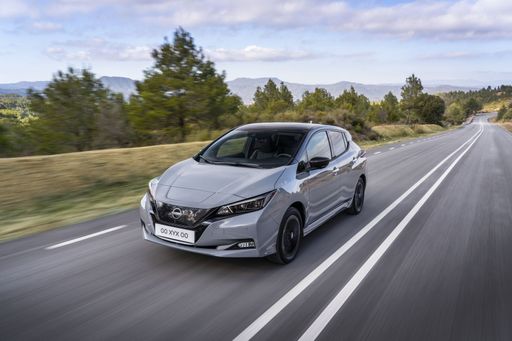 @ Nissan Motor Corporation
@ Nissan Motor Corporation
Nissan Leaf
Costs and Consumption
View detailed analysis
Engine and Performance
View detailed analysis
Dimensions and Body
View detailed analysis
Mazda CX-30
The Mazda CX-30 blends sleek coupe-like lines with the practicality of a compact crossover, feeling more premium than its price tag suggests. It’s a joy to drive for anyone who likes a taut chassis and an interior that treats daily commutes like a small luxury escape.
details @ Mazda Motor Corporation
@ Mazda Motor Corporation
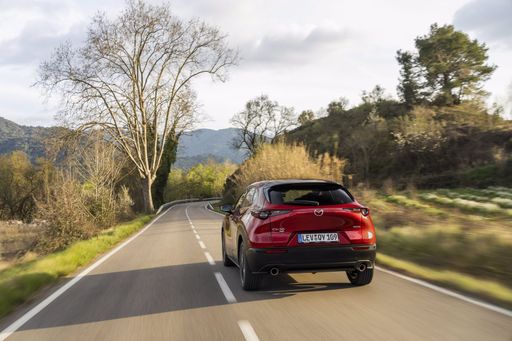 @ Mazda Motor Corporation
@ Mazda Motor Corporation
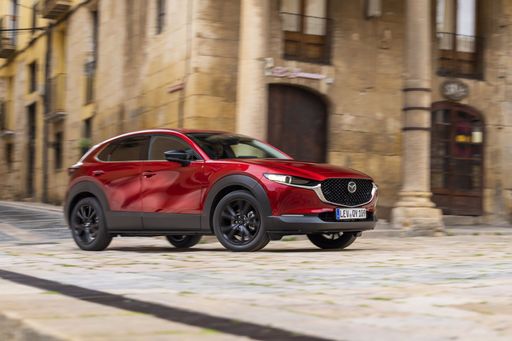 @ Mazda Motor Corporation
@ Mazda Motor Corporation
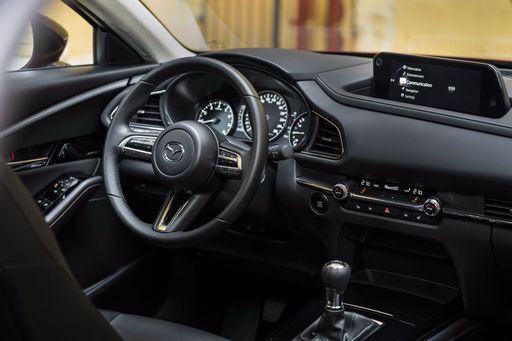 @ Mazda Motor Corporation
@ Mazda Motor Corporation
Nissan Leaf
The Nissan Leaf is a practical, easygoing electric hatch that turns daily commutes into a quiet, effortless affair while offering more cabin space than it lets on. It’s a sensible, wallet-friendly step into electrification for buyers who value comfort and simplicity over sporty drama, though those chasing long-distance thrills might look elsewhere.
details @ Nissan Motor Corporation
@ Nissan Motor Corporation
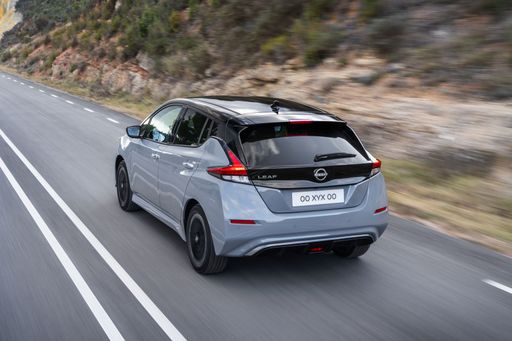 @ Nissan Motor Corporation
@ Nissan Motor Corporation
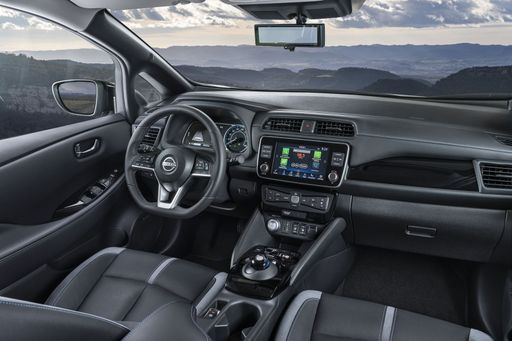 @ Nissan Motor Corporation
@ Nissan Motor Corporation
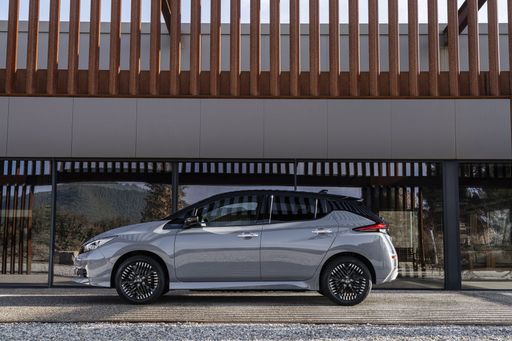 @ Nissan Motor Corporation
@ Nissan Motor Corporation
 @ Mazda Motor Corporation
@ Mazda Motor Corporation
|
 @ Nissan Motor Corporation
@ Nissan Motor Corporation
|
|
|
|
Costs and Consumption |
|
|---|---|
|
Price
25200 - 36800 £
|
Price
30800 - 37200 £
|
|
Consumption L/100km
5.7 - 6.6 L
|
Consumption L/100km
-
|
|
Consumption kWh/100km
-
|
Consumption kWh/100km
16.7 - 17.8 kWh
|
|
Electric Range
-
|
Electric Range
270 - 385 km
|
|
Battery Capacity
-
|
Battery Capacity
39 - 59 kWh
|
|
co2
129 - 148 g/km
|
co2
0 g/km
|
|
Fuel tank capacity
48 - 51 L
|
Fuel tank capacity
-
|
Dimensions and Body |
|
|---|---|
|
Body Type
SUV
|
Body Type
Hatchback
|
|
Seats
5
|
Seats
5
|
|
Doors
5
|
Doors
5
|
|
Curb weight
1455 - 1587 kg
|
Curb weight
1580 - 1756 kg
|
|
Trunk capacity
422 - 430 L
|
Trunk capacity
385 - 394 L
|
|
Length
4395 mm
|
Length
4490 mm
|
|
Width
1795 mm
|
Width
1788 mm
|
|
Height
1540 mm
|
Height
1540 - 1545 mm
|
|
Max trunk capacity
1398 - 1406 L
|
Max trunk capacity
790 L
|
|
Payload
458 - 496 kg
|
Payload
384 - 415 kg
|
Engine and Performance |
|
|---|---|
|
Engine Type
Petrol MHEV
|
Engine Type
Electric
|
|
Transmission
Manuel, Automatic
|
Transmission
Automatic
|
|
Transmission Detail
Manual Gearbox, Automatic Gearbox
|
Transmission Detail
Reduction Gearbox
|
|
Drive Type
Front-Wheel Drive, All-Wheel Drive
|
Drive Type
Front-Wheel Drive
|
|
Power HP
140 - 186 HP
|
Power HP
150 - 217 HP
|
|
Acceleration 0-100km/h
8.3 - 10.3 s
|
Acceleration 0-100km/h
6.9 - 7.9 s
|
|
Max Speed
191 - 204 km/h
|
Max Speed
144 - 157 km/h
|
|
Torque
238 - 240 Nm
|
Torque
320 - 340 Nm
|
|
Number of Cylinders
4
|
Number of Cylinders
-
|
|
Power kW
103 - 137 kW
|
Power kW
110 - 160 kW
|
|
Engine capacity
1998 - 2488 cm3
|
Engine capacity
-
|
General |
|
|---|---|
|
Model Year
2025
|
Model Year
2019
|
|
CO2 Efficiency Class
D, E
|
CO2 Efficiency Class
A
|
|
Brand
Mazda
|
Brand
Nissan
|
What drive types are available for the Mazda CX-30?
The Mazda CX-30 is offered with Front-Wheel Drive or All-Wheel Drive.
The prices and data displayed are estimates based on German list prices and may vary by country. This information is not legally binding.
